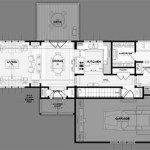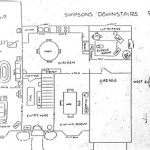In The Haunted House Eve Bunting: Exploring Essential Aspects in English Language
In the realm of children's literature, Eve Bunting's "In the Haunted House" stands as a timeless tale that has captivated young readers for decades. This evocative novel explores themes of courage, resilience, and the power of imagination. To delve into the intricacies of this beloved work, educators can harness the power of lesson plans that dissect its essential aspects.
Character Analysis: Unraveling Fear and Overcoming Obstacles
At the heart of Bunting's narrative lie the characters of Diane and her siblings, who confront their fears while exploring a dilapidated old house. Lesson plans can guide students in analyzing the motivations, thoughts, and actions of these characters. By examining their struggles and triumphs, students can gain valuable insights into human nature and the importance of perseverance.
Setting: Investigating the Impact of Environment
The haunting atmosphere of the old house in the novel plays a pivotal role in shaping the events that unfold. Lesson plans can delve into the significance of setting, exploring how the dilapidated exterior, creaking floors, and eerie noises contribute to the story's suspense and tension. Through discussions and writing exercises, students can analyze the powerful effects of ambiance on character development and plot progression.
Theme Exploration: Unveiling Courage, Resilience, and Imagination
Bunting's novel is a treasure trove of important themes that can ignite meaningful classroom discussions. Lesson plans can focus on exploring the theme of courage, examining how Diane and her siblings face their fears with determination and resourcefulness. Additionally, the theme of resilience can be explored, highlighting the characters' ability to persevere through adversity and emerge stronger. Furthermore, the theme of imagination can be examined, as "In the Haunted House" encourages readers to envision the possibilities beyond the boundaries of reality.
Literary Devices: Enhancing Comprehension and Appreciation
Bunting's skillful use of literary devices enriches the narrative and enhances its impact on readers. Lesson plans can introduce students to literary devices such as foreshadowing, symbolism, and imagery. By analyzing how these devices contribute to the story's atmosphere, tension, and character development, students can gain a deeper understanding of the author's craft and appreciate the nuances of literary language.
Creative Writing: Fostering Imagination and Expression
In the spirit of Eve Bunting's imaginative storytelling, lesson plans can incorporate creative writing activities to stimulate students' creativity and enhance their storytelling skills. By engaging in writing exercises such as character development, scene writing, and narrative analysis, students can develop their own unique literary voices and explore their own imaginations.
Drama and Role-Playing: Embracing Active Learning
To bring the characters and events of "In the Haunted House" to life, lesson plans can incorporate drama and role-playing strategies. Students can actively participate in scenes, portraying the characters and experiencing their emotions firsthand. Through role-playing, students can develop empathy, enhance their communication skills, and gain a deeper understanding of the narrative's complexities.
Assessment Strategies: Evaluating Understanding and Skills
Effective lesson plans include comprehensive assessment strategies to evaluate students' understanding and skill development. Formative assessments, such as class discussions, quizzes, and writing prompts, can provide ongoing feedback and identify areas for improvement. Summative assessments, such as essays, projects, or presentations, can assess students' overall understanding of the novel and their ability to apply their knowledge and skills.
In conclusion, "In the Haunted House" by Eve Bunting presents a wealth of educational opportunities for English language instruction. Lesson plans that focus on character analysis, setting investigation, theme exploration, literary device identification, creative writing, drama, and assessment can engage students, deepen their comprehension, and inspire their own literary endeavors. By embracing these essential aspects, educators can foster a lifelong love of reading and writing while nurturing the imaginations and critical thinking skills of their students.

Haunted House For Writing Activity And Craft Ideas Clutter Free Classroom By Jodi Durgin

Haunted House For Writing Activity And Craft Ideas Clutter Free Classroom By Jodi Durgin

In The Haunted House By Eve Bunting Paperback Target
Socially Successful Kidspeak

In The Haunted House Eve Bunting Books For Kids Reading

Haunted House For Writing Project And Craft Ideas Clutter Free Classroom Bloglovin

Haunted House Escape Room Game Teacher Made

Haunted House For Writing Activity And Craft Ideas Clutter Free Classroom By Jodi Durgin
Haunted House For Writing Project And Craft Ideas Clutter Free Classroom Bloglovin

Haunted House For Writing Activity And Craft Ideas Clutter Free Classroom By Jodi Durgin








